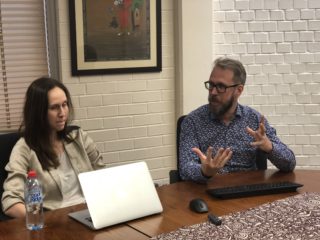2018 ACAT Seminars
11 December 2018 - The speculative freezer: exploring the ex-situ conservation of endangered wild species as a science-fictional practice by Anna-Katharina Laboissiere
In the looming shadow of the sixth mass extinction event, conservation biologists are engaged in an increasingly frantic scramble to assemble and bank ex-situ collections of endangered wild species. Conservation of species outside of their natural habitat, in living collection (zoological and botanical gardens) or suspended in banks of frozen material, has provided philosophical and anthropological material to forays into technologically mediated and transformed relations to nonhuman life, the environment, ecological catastrophe and linear time. Most often, they are studied for their suspensive aspect, and their apparent commitment to evangelical time and post-apocalyptic salvation. Bank and garden are, however, also the sites of environmental and relational experimentation; far from being only cold storage or provisional bunkers, they enable the emergence of speculative scientific projects ranging from the feasible to the fantastic, and which might reorder the imaginative and biopolitical structure of relations with nonhuman lives. In this paper, I will explore the implications of taking ex-situ conservation seriously, not only as a suspension of life made latent but also as a highly dynamic science-fictional weave of texts and practices whose transformative dimension is of philosophical and cultural import.
Anna-Katharina Laboissière is a PhD candidate at the department of philosophy of the Ecole Normale Supérieure, France and the Centre for Culture and Technology of Curtin University, Australia. Her PhD focuses on the ex-situ conservation of wild species, and her research interests include the history of conservation biology and gardening, extinction and counter-extinction, the philosophy of multispecies co-constitutions, philosophical ethology, and feminist and queer ecologies.
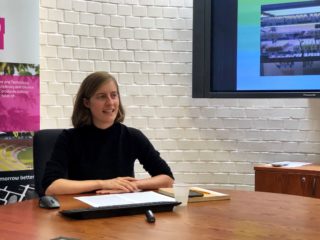
16 November 2018 - Creative Innovation and Networked Culture in China: Preliminary Findings from Fieldwork by Huan Wu
This presentation forms part of a book project titled Creative Innovation and Networked Culture: Future-forming and Global China, which is co-written by John Hartley, Lucy Montgomery, Henry Li and myself. The book provides a model of how creativity drives culture and enterprise. This presentation will introduce findings from my one-month fieldwork in five cities in China in 2018. I found that the pervasiveness of the topic of entrepreneurship and an increase of entrepreneurial communities are related to China’s contemporary culture, government policy and the fast development of the Internet-based economy.
This presentation will share several stories, which reflect features of creative innovation and networked culture in distinct areas in China. It will reveal how Chinese entrepreneurs create new knowledge by integrating international theories and experience with local knowledge and experience. It discusses challenges Chinese entrepreneurs and creative workers are facing through an analysis of the social context in which creativity or new knowledge grows in today’s China.
Dr Huan Wu is a research associate working in the Centre of Culture and Technology and Digital China Lab at Curtin University. She received her doctoral degree in Communication from The Chinese University of Hong Kong. She is also an associate professor in School of Media and Communication at Shanghai Jiao Tong University, China. Her research interests include the interaction between new media and the disadvantaged groups and the development of creative industries in China. She had been awarded the Endeavour Cheung Kong Scholarship and studied in The ARC Centre of Excellence for Creative Industries and Innovation (CCI).
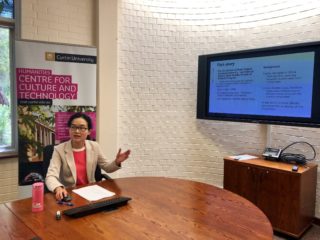
16 October 2019 - China’s Belt and Road: Knowledge, Power and Regional Engagement by Michael Keane
The Belt and Road Initiative (hereafter BRI), initiated in 2013 by President Xi Jinping, refers to the overland corridors that connect Western China with Europe via Central and South Asia as well as the maritime routes that are intended to link China’s southern provinces to Southeast Asia and beyond. While remaining the subject of much media and academic speculation as to its future performance, the BRI, constitutes a kind of ‘assemblage’, a metaphorical term that describes its capacity to function as a ‘system’, in which parts can be added, subtracted or rearranged. System refers firstly to the ‘international system’ and its institutions, and secondly to the relations between knowledge, power and regional engagement in a region deep in transition.
The focus of this presentation is encapsulated in three interrelated themes:
- CONNECTIVITY: [Digital superpower, Made in China 2025; AI; online platforms and business supply chains];
- EMPIRE: [Statecraft; regional development policy; foreign aid and its challenges];
- CIVILISATION: [Eco-civilisation; civilizational state; shared cultural values and identity]
Michael Keane is Professor of Chinese Media and Cultural Studies at Curtin University. He is Program Leader of the Digital China Lab. http://ccat-lab.org/program/digital-china-lab/ Michael’s key research interests are digital transformation in China; East Asian cultural and media policy; and creative industries and cultural export strategies in China and East Asia.
23 August 2018 - Network Enabled Scholarship: Connectivity, groups and growth in the production of knowledge by Cameron Neylon
We often talk about “research networks” for projects. Our measures of research quality are often based on networks of citations. Social media networks are increasingly important in internal and external communications of research. Usually we think about these things as external technologies that have affected how we do things. Social technologies of funding intended to drive collaboration, data collection technologies that let us think about not just one link between articles but the characteristics of the whole system, communications technologies with new possibilities. But to think of these as external effects is to miss the fact that the networks have always been there. What has changed is their density and interconnection. We can actually turn the question around. Rather than ask what impact social media networks have had on research, we should ask what changes were occurring that required something like social media to be developed? For science to continue growing, it needs more complex and larger networks to be formed. What are the characteristics of systems that support that? How do we design scholarship as networks so that it can continue to grow?
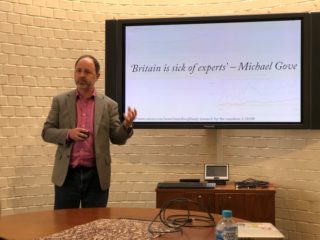
22 June 2018 - The cultural turn of internet media companies and its precarity: The case of Tencent by Henry Li
Despite their huge success, internet media companies remain vulnerable in the capricious and murky regulatory environment in China and have carefully treaded the line of political soundness. Tencent, as the world’s largest game company and owner of China most popular social media platforms (WeChat and QQ), has been dogged by the stigma of catering to the vulgar and popular, thus keen to gain cultural and political legitimacy with the state. Its latest move towards this direction is to rebrand its successful “Pan Entertainment” strategy as one of “New Culture and Creativity” against the setting of China’s bid to develop a dynamic creative economy and move up to be a global cultural power. However, the precarity remains: what cultures Tencent need to represent to be both financial viable and politically correct? In this talk I use Tencent as a case to analyse the complicated relationship between capital and the state in China’s context and its implications for creative economy there.
Associate Professor Henry Li is Dean of International for China at Curtin University. His research focuses on self-representation and user-productivity among young people in Chinese social media networks.
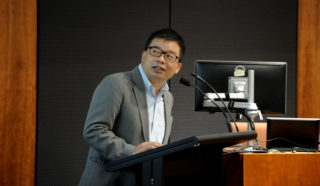
17 May 2019 - Digital Intimate Publics and Social Media: public lives on private platforms by Amy Dobson
Public debate about social media frequently air concerns about ‘over-sharing’ — that is sharing about aspects of everyday life deemed excessively intimate, pedestrian, mundane, or crass. The theoretical frame of ‘intimate publics’ (Berlant, 2008) helps us think about how contestations over power play out in the generative, liminal space where the public and private intermingle. Berlant and Warner (1998) advocate for a publicisation of the intimate that speaks against privatisation, in the sense of both space and property, with an understanding of the intimate connection between the prioritisation of private property rights and ‘private’ (heteronormative) spaces and relations. More public, mobile, and unpredictable forms of attachment can and do form on social media platforms. But crucially, we must hold on to the double sense of ‘public’ as referring to both space and property ownership. In this paper I outline conceptualisations of digital intimacy as social capital and digital intimacy as labour, and highlight the need to hold these together in analyses of digital culture. I suggest that noticing forms of connection and attachment that ‘don’t fit’, and shifts in the ‘regime of attention’ (Hjorth & Lasen, 2017) on social media has become extra-significant to aesthetic and political processes because of the importance of human attention to algorithmic machine-learning.
Dr Amy Dobson is a Lecturer in Internet Studies at Curtin University. Her work focuses on youth, gender politics, social media, and feminine subjectivities. She is the author of Postfeminist Digital Cultures (2015), published by Palgrave. Her recent projects include research into cyber-safety and sexting education, female genital cosmetic surgery, and girls’ and young women’s social media cultures.
11 April 2019 - Bates in the 21st century by Nick Thieberger
The Daisy Bates papers are a rich source of information about many different Aboriginal people and languages from the early 1900s. Bates was a controversial figure whose legacy is difficult to navigate, taking up 10.47 metres (55 boxes) in the National Library.
In 1904, Bates prepared a questionnaire with around 2,000 prompt words and sentences to be filled in with local Aboriginal people in their language. The present ‘Daisy Bates Online’ project has digitised, typed and put this material online. Representing 21,000 pages, this process has finally made it possible to search the collection and to present the text and images of the typescript and handwritten questionnaires together online. Each of the 150 typescripts has been geocoded so prompt words can be presented on a map.
The technologies used in preparing this data are the Text Encoding Initiative’s (TEI) XML schema, RDF, SPARQL, XSLT, Xproc, with json and javascript for presentation.
In this talk I suggest that this is a model that can be extended to a larger set of primary manuscript records of Australian languages. The work provides primary sources together with an annotation, allowing users to judge for themselves how accurate the transcription is. At a time when increasing numbers of languages are being relearned from early sources it is important to prepare those sources for access and use.
Nick Thieberger is an Australian Research Council Future Fellow at the University of Melbourne, Australia.
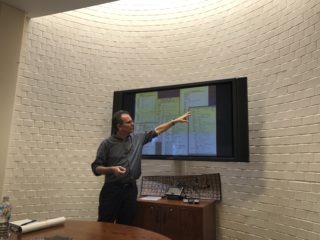
8 March 2018 - Metadata’s Adventures in Culture and Technology: The work of cultural modelling and its effects on reuses of audiovisual heritage by Indrek Ibrus and Maarja Ojamaa
The focus of our presentation is metadata. More specifically, we will concentrate on metadata’s modelling influence on the content of digital cultural archives and on the cultural realities that the content mediates. Proceeding from a general overview of the nature, kinds and functions of metadata, the presentation will tackle the phenomenon from different theoretical perspectives, some of which have rarely been seen in dialogue before. These include Foucault’s groundbreaking revelations on the discursivity of the archive, Derrida’s psychoanalytic take, the media archaeological propositions of Wolfgang Ernst, and the cultural semiotic perspective of metadata as metalanguage. In addition to the theoretical part, we present some empirical findings from two Estonian digital databases, where different approaches to metadata have concurrently led to significant differences between the verbal past and the audiovisual past. In conclusion, we seek to explicate the implications of our interdisciplinary approach for understanding the relationship between digital networked archives and broader heritage-based innovation in culture.
Bios
Indrek Ibrus is a professor of media innovation at the Baltic Film, Media, Arts, and Communication School (BFM) at Tallinn University. He is also the head of Tallinn University Centre of Excellence in Media Innovation and Digital Culture. He has authored several publications on media innovation and evolution, media standardisation, mobile media, cross- and transmedia and data management. He advises on a regular basis the Estonian government, EU Commission and the Council of Europe on media and cultural policymaking. He holds a PhD from London School of Economics and a MPhil from the University of Oslo.
Maarja Ojamaa is a researcher at the Baltic Film, Media, Arts, and Communication School (BFM) at Tallinn University. She is also affiliated with the Department of Semiotics at the University of Tartu, where she defended her PhD thesis on the transmedial aspect of cultural autocommunication. Maarja’s primary research interests lie in the transmedial mechanisms of cultural memory and in ways of diversifying the reusage of cultural heritage. In addition to her research work, she has been teaching semiotics-related courses at all stages of the Estonian higher education system as well as in high schools.
